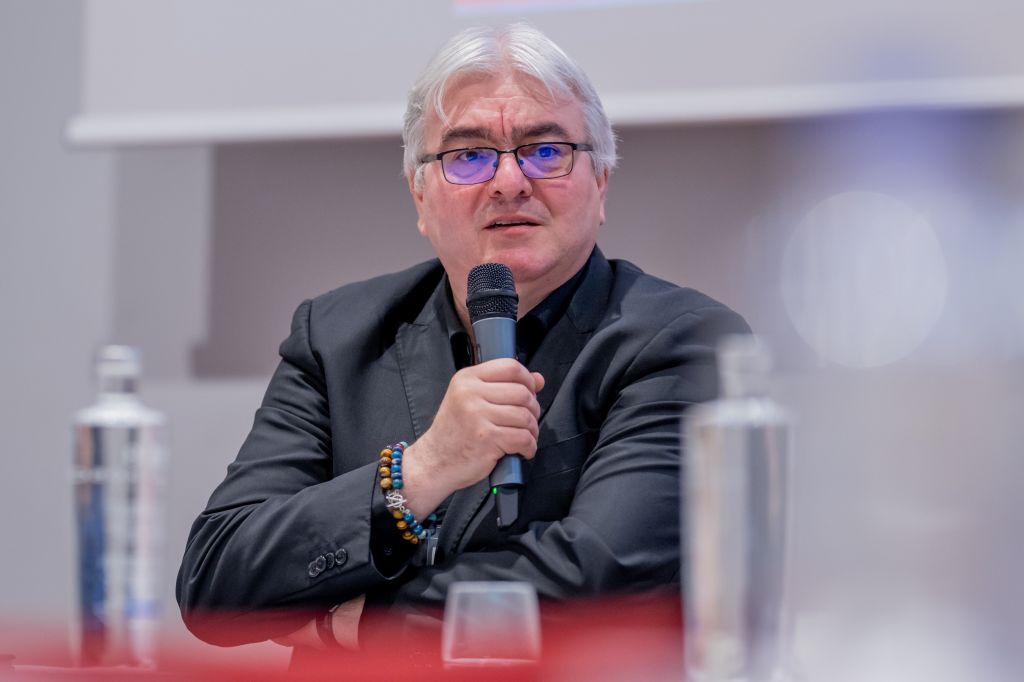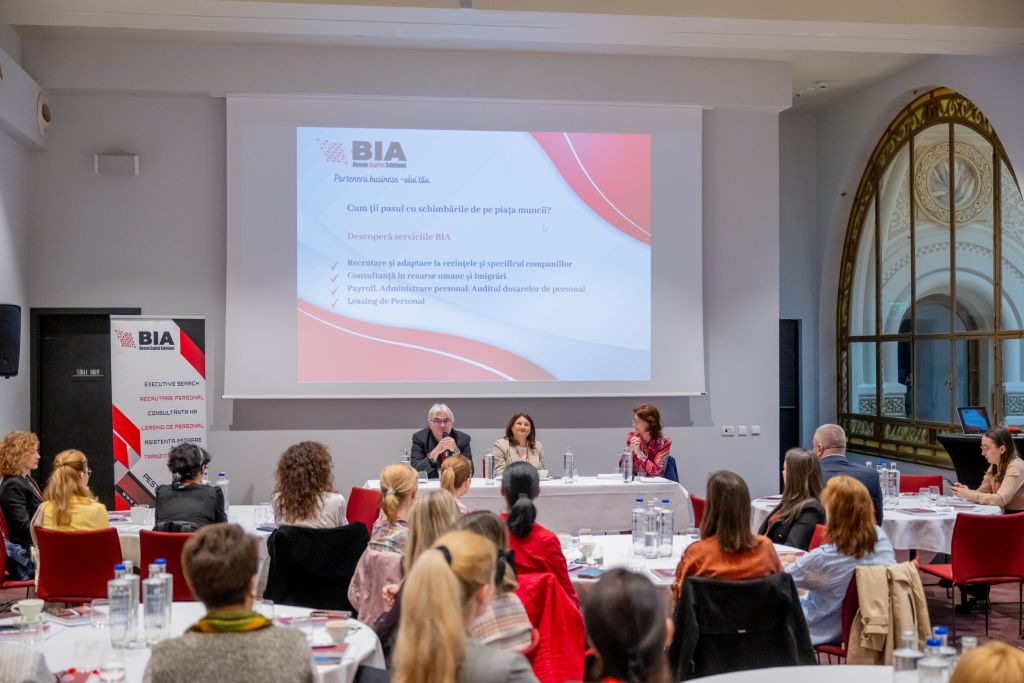
How to Adapt Recruitment in a World Where AI, Automation, and Digitalization Are Rewriting the Rules — And Generation Z Brings a Whole New Perspective on Work
Artificial intelligence, digitalization, the green transition, along with demographic and social shifts, are the major macrotrends set to reshape the job market by 2025. According to the Future of Jobs 2025 report by the World Economic Forum, 170 million new jobs will emerge by 2030, while 92 million will disappear. The professional landscape is evolving at a rapid pace — driven largely by technological advances and digital transformation — and the skills that mattered just a few years ago are no longer enough.
Amid all this change, Generation Z is stepping onto the job market — pragmatic, adaptable, and holding a very different view of what a career should look like. Today’s young professionals aren’t just looking for a paycheck or long-term job security. They want purpose, balance, and a workplace that aligns with their values.
If you’re an employer or an HR leader, you’re probably asking yourself:
✅ How do you prepare to recruit Generation Z talent?
✅ What are they expecting from a future job?
✅ What should a recruitment process look like to truly grab their attention?
✅ How can you collaborate with universities to more effectively attract students?
Romina Surugiu, Dean of the Faculty of Journalism and Communication Sciences (FJSC), and Marian Crăciun, Director of the Career Counseling Department at the University of Bucharest, shared their insights during the HR Power Breakfast event organized by BIA. They discussed how they’re preparing young people for the labor market, what students want from their future jobs, and how universities and companies can work more closely together to create a more balanced and sustainable professional future.

HOW CAN EMPLOYERS MORE EASILY ATTRACT GENERATION Z YOUNG PROFESSIONALS?
Romina Surugiu: At our faculty, we’re asking ourselves the same question. We manage to get young people’s attention when we clearly explain what benefits they’ll get. For example, during the entrance exam for the Faculty of Journalism and Communication Studies, we gave candidates a questionnaire asking what influenced their decision to apply. Among the possible answers were things like well-known professors and strong media activity. But what the students actually chose were dormitory accommodations, scholarships, and opportunities for study abroad.
We were surprised that the reputation of the faculty or its brand wasn’t a bigger factor in their decision.
My advice is to clearly highlight what you’re offering. This is a generation that expects employers to bring something to the table. Compared to the generations I worked with 20 years ago, today’s young people don’t have that same strong urge to land a job and accept any starting conditions just to get a foot in the door. There’s a bit more negotiation involved when it comes to working with Generation Z.

Marian Crăciun: We’re all familiar with the metaphor of the Ivory Tower. At one point, the university, the job market, and the students each lived in their own little towers. I remember back when I was a student—I used to go to companies to try to form partnerships or ask for funding for the Freshmen Ball, and the whole process would take a few weeks. Now, we’re just two clicks away from each other, and we can find solutions much faster. In recent years, we’ve managed to become much more open and connected.
In the area of counseling, I’ve noticed a shift in the students’ profiles. Employers need to adapt to these new profiles and expectations—even when they might seem exaggerated at times. These are the students we work with, and we must understand each other.
Their expectations are shaped by realities that have developed over time, including psychological perspectives. Some students want to change things; others lack the motivation to take action. Each of them deserves a chance. Those of us working in counseling need to be there to support all of them, regardless of their background.
What Should a Recruitment Process Look Like to Attract Students?
Romina Surugiu: We received a proposal at the university from a company that wanted to present its recruitment program to our students. To ensure they would be addressing an audience genuinely interested in their job opportunities, we asked the company representatives a few key questions: What qualifications are they looking for in students? What types of jobs are they offering? What are the employment conditions?
We also explained what students generally expect from such events, and the company was receptive. In areas where they had planned a different approach, they took our advice—and it paid off, helping them attract potential candidates.
They wanted to speak specifically with master’s students. I told them we also have international students enrolled in our master’s programs, so the company held the presentation in English. The international students were the first to scan the QR code to find out more about the job opportunities. They even brought along classmates or friends from other faculties.
The company prepared a 40-minute presentation and used a tool called Mentimeter. Questions about the company and students’ expectations appeared on the screen. Students scanned a code, and their responses were displayed in real-time. It turned into a lively 10-minute session that grabbed the students’ attention—a tough thing to do, especially when phones can be a big distraction.
After the Mentimeter poll, the employers presented their offers. The students were particularly interested in internships. The recruiters emphasized what the company could offer and highlighted the benefits, one of the major ones being the option for hybrid work. Students are very drawn to this model; having one remote workday a week is a significant advantage for them.
The timing of the meeting was also well thought out. The company representatives held the session at 6:00 PM, during a time when students had class, and we coordinated with the professors to allow students to attend the event.
I believe it’s a big plus to take part in job fairs and to bring branded merch—custom t-shirts, pens, notebooks. Student-focused events like these can make a strong impact.
We also conducted some research within the faculty to find out what students had taken away from the pandemic. They told us they’ve kept one or two days of online work during the week—days when they can also take care of personal matters, as long as they manage their time well and stay on top of their tasks.
Marian Crăciun: At job fairs, the most popular employers are the Foreign Intelligence Service and the Special Telecommunications Service (laughs). They’re the ones who often come to these events with expectations that don’t quite align with what students are looking for. Throughout dozens of job fair editions, I’ve received fantastic feedback from students about some companies, and very critical feedback about others.
As a graduate of the Faculty of Letters, I learned that in any kind of communication, the most important thing is to capture your audience’s attention. If you don’t manage to do that, then even the most important messages you want to deliver won’t matter anymore.
There have been times when a guest speaker wasn’t fully prepared for interacting with students. Young people can be critical; sometimes, they end up at a job fair out of necessity or by chance. If you can’t adapt to their level of communication, it won’t matter how great your offers are—you’ll lose them halfway through your presentation.
At one job fair, during the third or fourth company presentation, a bored student asked: “We already know how CVs work. Wouldn’t it be better if you just talked to us from personal experience?”
That was a turning point for both us, the organizers, and the guest speakers. It made us realize that students go through a real marathon during these events, meeting employer after employer over two days.
Being authentic, adapting to the communication context, and coming with genuine offers—those are the keys to connecting with students. Breaking down prejudices matters a lot too.
What should a recruitment process look like to truly capture students’ attention? The most striking example I have goes back ten years. It was one of the first meetings between company representatives and students. I had organized a presentation with a tech company at the Faculty of Mathematics. 137 students had signed up. The day before, I called to confirm attendance—99 students said they’d be there.
At 10:00 AM, in the Mathematics amphitheater, only four students showed up—two of them were volunteers. It was a harsh reality, but also a huge opportunity for those four. All of them ended up being hired by the tech company.
What was supposed to be a formal presentation turned into a friendly conversation, with targeted questions and open discussion. And I’m sure that at least 10 students who later heard about the meeting regretted not waking up and coming to class that day.
Promoting these kinds of events is crucial if you want to see results. I encourage employers not to focus on the numbers, but rather on attracting students who are genuinely motivated to attend. That motivation matters a lot—especially when they eventually become employees.
Because if someone lacks motivation, they’ll likely quit within weeks or months—or they’ll stay, but remain constantly dissatisfied and unwilling to learn.

IF WE WERE TO DESIGN A RECRUITMENT PROCESS WITH AUTOMATED STAGES, HOW WOULD GENeration Z REACT?
Romina Surugiu: Students are now using AI to craft their CVs and cover letters. At the university level, we’ve been interested in how students are integrating artificial intelligence tools (like ChatGPT, but not only that) into their academic work. Ever since ChatGPT launched in November 2022, we, as professors, started asking ourselves: “Is the paper we’re receiving from a student written by them—or by ChatGPT?”
We surveyed students in both Romania and France (by the rules of the Francophone University Agency, which funded the research) to understand the ways they’re using AI. Interestingly, in both countries, students primarily use AI tools like ChatGPT to write cover letters for potential employers. We initially assumed they were using AI for their thesis papers, but in reality, they’re crafting job application emails with it. So if you’re receiving polished, well-written emails, chances are they were written by ChatGPT. The tool doesn’t make punctuation mistakes and often provides very thoughtful guidance. When you do spot awkward phrasing or an error, that’s usually a sign the message was written by a human.
Since students are making use of automation, employers can certainly do the same in recruitment.
We often think AI was born with ChatGPT, but artificial intelligence has been a part of internet tools for quite some time. For example, Google’s search engine already incorporates AI elements.
As an employer, it’s worth considering the apps students are using—many are learning foreign languages through virtual assistants or platforms like Duolingo.
I’d also recommend that employers optimize their websites for mobile devices, so the application process is quick and seamless—aligned with the expectations of younger generations.
Marian Crăciun: New technologies have always been a challenge—but not an overwhelming one—because, in the language of career counseling, it’s all about adapting to change.
I’ve always considered myself somewhat resistant to change. I came to artificial intelligence relatively late, but at the same time, I have stronger technical skills than many of my peers.
By using new technologies in an ethical way, I managed to publish two books in just two months—something that used to take a year. I worked with archival documents enhanced through modern tools. I’m sharing this story because today’s students are ahead of us when it comes to a technological mindset. They’re able to use and integrate new technologies in communication, in personal development, and building relationships.
LinkedIn remains the go-to platform for professionals, even though both LinkedIn and Facebook are often seen by younger people as “platforms for older generations.” It’s important that we understand how their perception of technology is shifting and that we integrate new tools quickly so they become easier to use for our own goals.
When it comes to recruitment, I still believe that no matter how well ChatGPT can write a résumé or cover letter, it’s your attitude during the interview that truly makes the difference.
Marian Craciun: Introducing new courses into the curriculum is a challenging topic. Changing the curriculum and adding a new course or a new master’s program means additional accreditation processes, which usually take quite a long time due to legislation. Currently, the University of Bucharest is working intensively to create a framework for cooperation between faculties in Romania and those abroad to facilitate easier recognition of degrees.
Over the last 10 years, at the University of Bucharest, we have managed to build strong connections with labor market specialists. We collaborate with BIA HCS on job fairs and Career Days. At these events, experienced professionals from companies engage directly with students and help dispel myths related to career paths. By busting these myths, we succeed in forming partnerships between the university and companies.
Many years ago, we believed that if students studied hard, they would automatically become successful employees. The message we’ve been promoting through the collaboration between the university and the labor market is this: The university’s role is to shape you as a person and develop your critical thinking skills, which are essential for adapting to change.
All our efforts to ensure academic performance have been accompanied by actions aimed at developing students’ transferable skills. We know how to do this, we have the experience, but we are behind when it comes to implementation. Although these courses are listed in the curriculum, which everyone can see, personal development or transferable skills courses (such as communication and adaptability) are harder to measure because they depend on the students’ needs and interests. If the students are interested, then our efforts become visible.

Have companies’ requests to partner with universities intensified? Or have such partnerships been initiated at the faculty level?
Romina Surugiu: We do receive requests, but many employers mainly want to post a job announcement on our Facebook page. They want to be associated with the faculty’s name. Sometimes we allow this, sometimes we don’t. From what I’ve seen, this approach doesn’t really bring much success.
What’s more important is the openness many companies have in offering internship opportunities. These give employers the chance to see students in action and to propose long-term collaborations to those who perform well, show interest, and passion.
I recommend employers organize internships, participate in events held by universities as well as student associations, and create competitions to select the best students.
Internship projects that bring together several companies have been successful, but we’ve been limited by the rules under the PNRR program. Currently, there is an internship project run by a communications company. This company won a project funded by PNRR. Such funds are directed to students who don’t live in Bucharest or the Ilfov region, giving them a fair chance at employment.
Companies applying for projects also have to deal with public procurement procedures and government bureaucracy. What I’ve noticed is that through this process, many valuable candidates have been selected.
Moreover, these internship projects bring funding both to companies and to students. At the Faculty of Journalism and Communication Sciences, these projects have helped many students find compatible companies and jobs.
Marian Crăciun: A major impact on how internships are perceived and carried out comes from legislative changes and public policies. I was among the few advisors nationwide involved in validating and debating the internship law, working closely with many private sector representatives. We arrived at the current version — it’s not perfect, but after many discussions, it’s the best workable solution.
This law allows us to offer internships to students within a structured framework and clear rules. As a result, more students get involved in these activities. On the other hand, one obstacle I’ve noticed at other faculties of the University of Bucharest is how internships are designed from an academic perspective. You can’t just validate certain skills anywhere or any way.
At the University of Bucharest, we have regulations that recognize participation in personal development sessions and transferable skills workshops — the percentage of these varies by faculty — as a complement to the mandatory internships.
We advise students to be more open to the job market, to consider professional changes, and to continuously be open to learning.
Another important aspect is the guidance provided to high school students when choosing a university, as well as the support given to college students throughout their studies to help them successfully integrate into the job market. Abroad, at the university level, there is typically one counselor or psychologist for every 600 students. In Romania, there is officially one counselor or psychologist for every 2,000 students, but the reality is closer to one for every 7,000 or 8,000 students. That’s why it’s so important for us to meet with company representatives—to change perceptions and even influence public policies.
WANT TO WORK WITH A TEAM THAT KNOWS HOW TO SPOT GENeeration Z TALENT?
The BIA Human Capital Solutions team brings over 33 years of recruitment experience and is ready to support your business. We aim to give you more time to focus on your team while we search for the best solutions to attract new colleagues, even for roles that are typically harder to fill. We regularly participate in job fairs at the University of Bucharest, host webinars for students, and offer various support activities to help identify top young talent.
WHY CHOOSE BIA’S SERVICES?
✅ 90% of our projects are successfully completed through direct search and headhunting.
✅ 80% of our past clients have returned to work with us again this year.
✅ We significantly reduce hiring time—some roles are filled in just 2–5 business days after launching the project.
✅ We have recruitment experience across various sectors: accounting, construction, retail, healthcare, pharma, automotive, and architecture.
✅ We recruit across all fields and industries.
✅ We manage the entire recruitment process from start to finish.
✅ We align job profiles with your company culture and develop a targeted candidate search strategy.
✅ We support the offer and negotiation process with candidates.
✅ Our services are guaranteed—if a candidate leaves during the trial period, we restart the recruitment process at no extra cost.
✅ We provide flexible offers tailored to your business needs.

